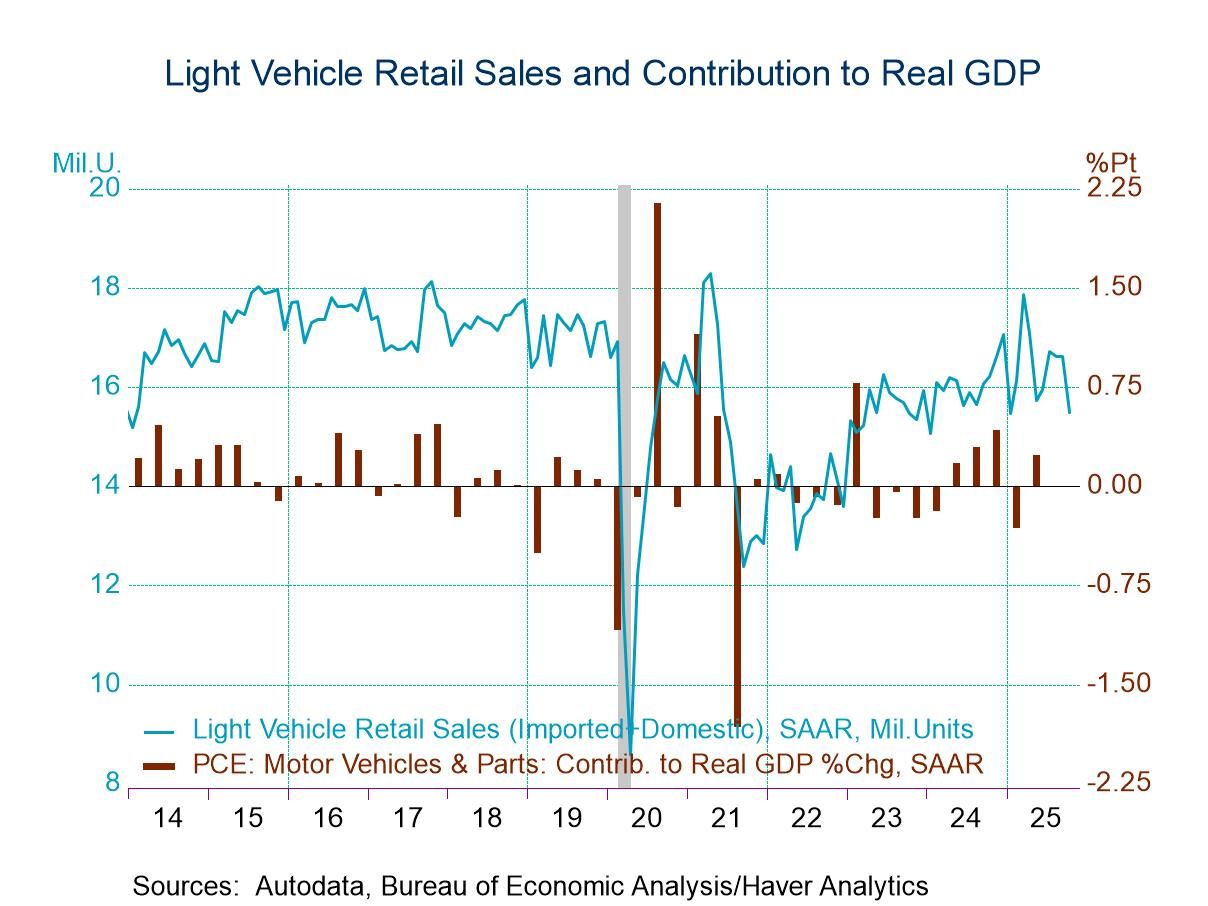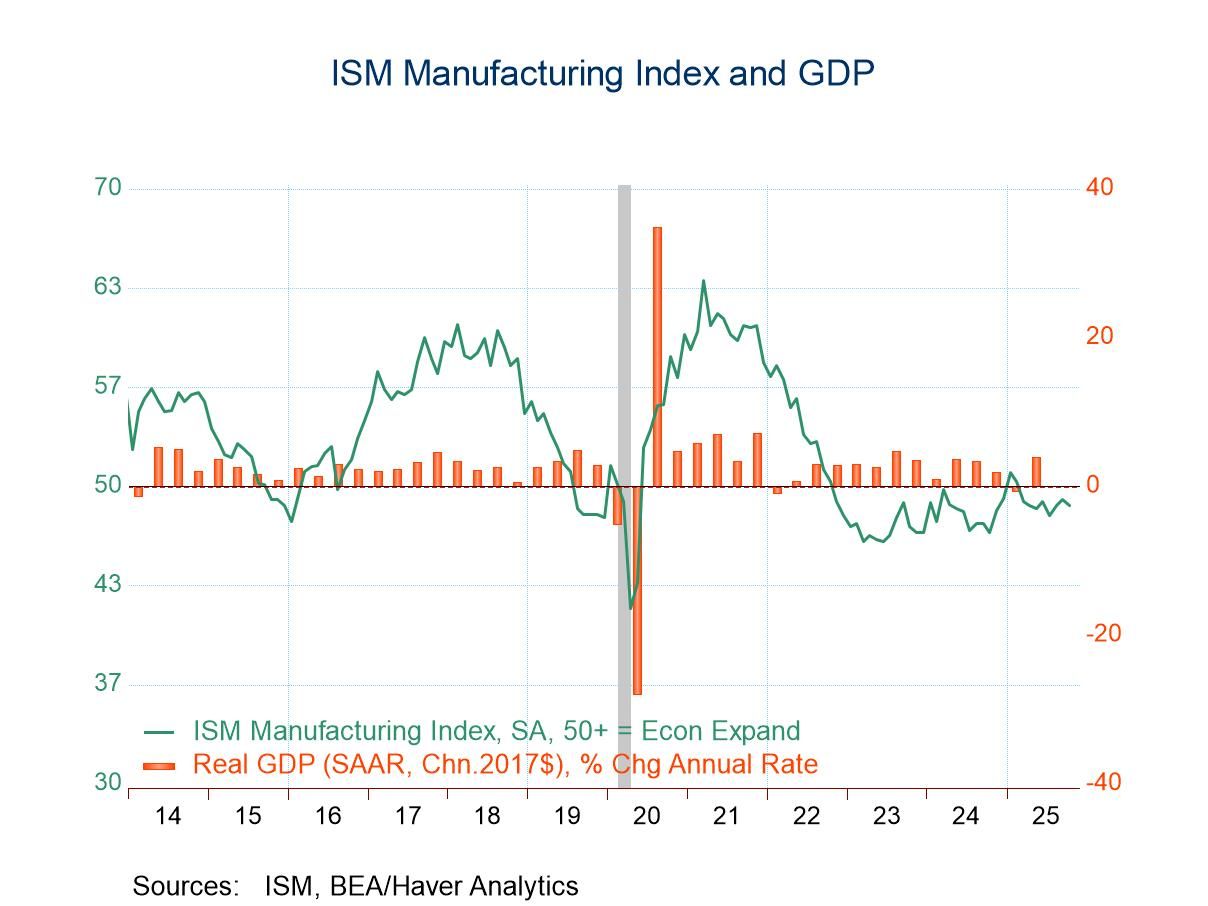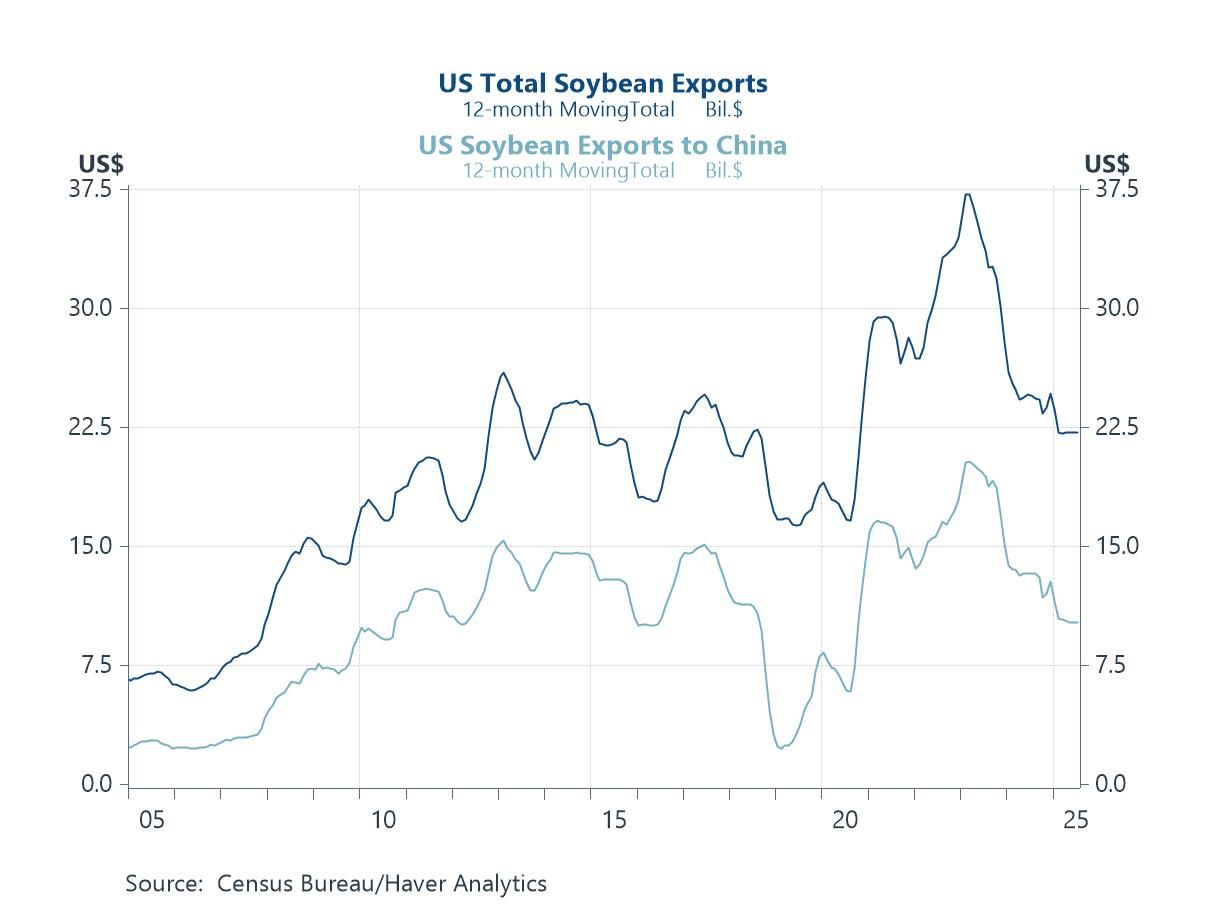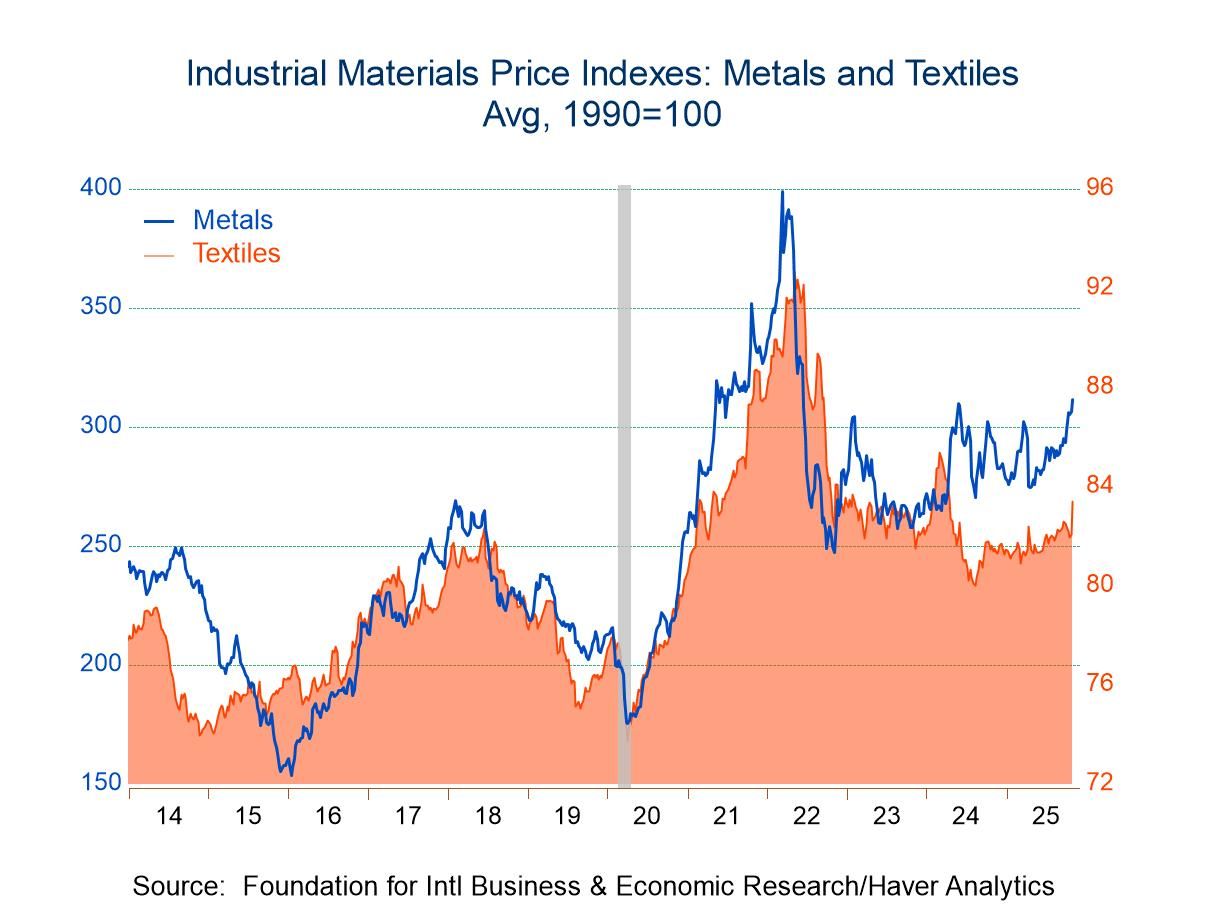 Global| Nov 16 2007
Global| Nov 16 2007U.S. Industrial Production Decline Broad and Unexpected
by:Tom Moeller
|in:Economy in Brief
Summary
Industrial production declined during October versus a Consensus expectation for a 0.1% uptick. The decline was the first since January and it was the largest m/m in two years. Because of modest 0.2% gains during the prior two months [...]

Industrial production declined during October versus a Consensus expectation for a 0.1% uptick. The decline was the first since January and it was the largest m/m in two years. Because of modest 0.2% gains during the prior two months the three month growth in industrial output fell to -0.7% (AR), its first time negative since early this year.
Factory output also was down and posted a 0.4% drop, its second 0.4% decline in the last three months. Those declines felled the three month growth rate to -2.7%, its first time negative since late lat year.
Easier output was broad based. Production in the motor vehicle & parts industries dropped 0.9% (+0.9% y/y). Output of furniture & related products suffered the weakness in the housing industry with a 0.2% (-2.6% y/y) decline while output of construction supplies fell 0.4% (+0.1% y/y), the forth consecutive monthly decline.
Returning to the consumer goods sector, production of computers & electronics fell 0.9% (+14.6% y/y), down for the third straight month. Apparel output also fell for the third consecutive month (-4.6% y/y). Chemical products output fell as well by 0.5% (-1.3% y/y).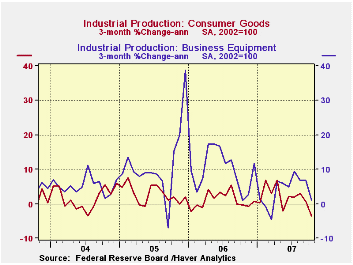
Output of business equipment held up with just a 0.1% decline (+4.6% y/y). Output of information & processing equipment, however, fell 0.3% and the three month growth fell to 2.9% versus double digit rates of growth earlier this year. Production of industrial equipment also has eased and it posted its second decline in the last three months. Three month growth rate fell to a negative 2.6% (AR).
In the materials category output fell 0.4%. Production of durable consumer parts fell 0.5%, unchanged over the last year and down for the second consecutive month. Production of durable equipment parts rose 0.3% (6.3% y/y) but other durable goods materials output fell 0.3% (+2.9% y/y).
Capacity utilization fell to 80.1%. Utilization in the factory sector fell m/m to 79.9% versus an average 80.2% last year. Capacity rose 0.1% (1.9% y/y).
Risk Management and the Economic Outlook is today's speech by Fed GovernorRandall S. Kroszner and it is available here.
| INDUSTRIAL PRODUCTION (SA) | October | September | Y/Y | 2006 | 2005 | 2004 |
|---|---|---|---|---|---|---|
| Total | -0.5% | 0.2% | 1.8% | 4.0% | 3.2% | 2.5% |
| Manufacturing | -0.4% | 0.2% | 2.1% | 5.0% | 4.0% | 3.0% |
| Mining | -0.6% | 0.6% | 0.4% | 2.7% | -1.6% | -0.6% |
| Utilities | -1.6% | -0.1% | 0.1% | 0.2% | 2.0% | 1.4% |
Tom Moeller
AuthorMore in Author Profile »Prior to joining Haver Analytics in 2000, Mr. Moeller worked as the Economist at Chancellor Capital Management from 1985 to 1999. There, he developed comprehensive economic forecasts and interpreted economic data for equity and fixed income portfolio managers. Also at Chancellor, Mr. Moeller worked as an equity analyst and was responsible for researching and rating companies in the economically sensitive automobile and housing industries for investment in Chancellor’s equity portfolio. Prior to joining Chancellor, Mr. Moeller was an Economist at Citibank from 1979 to 1984. He also analyzed pricing behavior in the metals industry for the Council on Wage and Price Stability in Washington, D.C. In 1999, Mr. Moeller received the award for most accurate forecast from the Forecasters' Club of New York. From 1990 to 1992 he was President of the New York Association for Business Economists. Mr. Moeller earned an M.B.A. in Finance from Fordham University, where he graduated in 1987. He holds a Bachelor of Arts in Economics from George Washington University.



